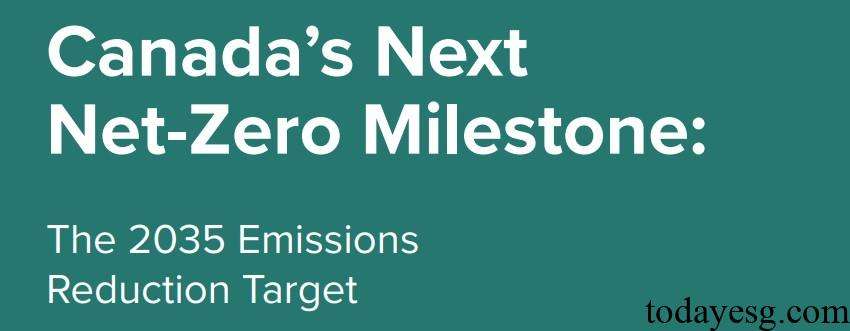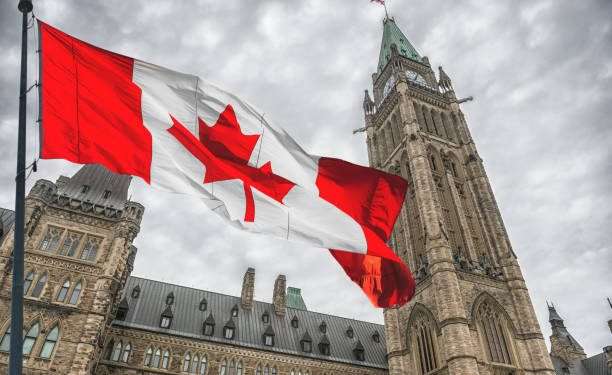2035 Carbon Emissions Reduction Target
Environment and Climate Change Canada (ECCC) releases 2035 carbon emissions reduction target, aiming to reduce carbon emissions to 50% to 55% of 2005 levels by 2035.
The Canadian Net Zero Emissions Accountability Act requires the government to set a 2035 greenhouse gas reduction target by 2024 and release a 2035 carbon reduction plan by 2029.
Related Post: Canada Plans to Introduce Sustainable Investment Taxonomy

Background of Carbon Emissions Reduction in Canada
The Environment and Climate Change Canada believes that climate change has already had significant impacts on the economy and society. In 2024, insurance losses related to severe weather in Canada reached a record high of CAD 7.7 billion. Climate change in 2025 could result in an economic loss of CAD 25 billion and reach 6% of GDP by the end of this century. From a global perspective, every 1 degree Celsius increase in temperature may lead to a 12% decrease in global GDP, therefore Canada needs to reduce carbon emissions while developing its economy.
The Canada Net Zero Emissions Accountability Act requires the government to set national emissions reduction targets ten years in advance, and the 2035 carbon emissions reduction needs to be set before 2025. In 2025, Canada will submit its Nationally Determined Contributions to the United Nations, including the latest projections of key carbon reduction measures and annual greenhouse gas emissions predictions. Currently, Canada is implementing the 2030 Emissions Reduction Plan to reduce carbon emissions and promote economic development.
The Role of 2035 Carbon Emissions Reduction Target
In addition to regulatory requirements, carbon emissions reduction can also provide economic growth opportunities for net zero transition. The International Energy Agency (IEA) believes that in order to achieve net zero by 2050, the world needs to triple its annual investment in clean energy, which currently amounts to $2 trillion. The Royal Bank of Canada believes that a net zero economy will create 235000 to 400000 new job opportunities in this century.
35% of Canada’s commodity exports come from emission intensive and trade intensive industries, which require significant decarbonization actions to maintain their competitiveness. Canada is also one of only two countries in the OECD where greenhouse gas exports exceed imports, and 40% of domestic carbon emissions are driven by foreign demand. Setting carbon reduction targets can meet economic needs and promote sustainable development.
How to Achieve 2035 Carbon Emissions Reduction Target
Canada plans to achieve its 2035 carbon emissions reduction targets from the following perspectives:
- Implementing domestic policies: Canada has established a climate framework to reduce greenhouse gas emissions, create economic opportunities, and promote innovation. Some core regulations, such as Clean Fuel Regulations, Clean Electricity Regulations, and Electric Vehicle Availability Standards, are driving industry transition. Some core incentive measures, such as Vehicle Purchase Incentives, Clean Economy Investment Tax Credits, and Canada Greener Homes Initiative, will reduce the cost of green investment. Canada is still developing sustainable investment rules and issuing green bonds to encourage private funds to invest in net zero direction.
- Supporting international emission reduction actions: International emission reduction actions will reduce the risk of carbon leakage and establish stronger carbon reduction capabilities. For example, the UK and the EU are implementing a Border Carbon Adjustment mechanism to mitigate the negative impact of unilateral carbon reduction policies. Canada plans to continue advancing international climate change initiatives, strengthen international cooperation, and provide climate funding for developing countries. At COP26, Canada launched the Global Carbon Pollution Pricing Challenge, which aims to cover 60% of global emissions through carbon pricing by 2030.
- Exploring potential areas for collaboration: Canada plans to collaborate with various stakeholders to explore tools that meet net zero emissions targets, prioritizing the 2035 carbon reduction target. Each region, indigenous people, private sector, and public have different resources and spheres of influence, which can play an important role in the transition to a green economy.
Reference:
Setting the Next Milestone to Building a Cleaner, Stronger Economy
ESG Advertisements Contact:todayesg@gmail.com








